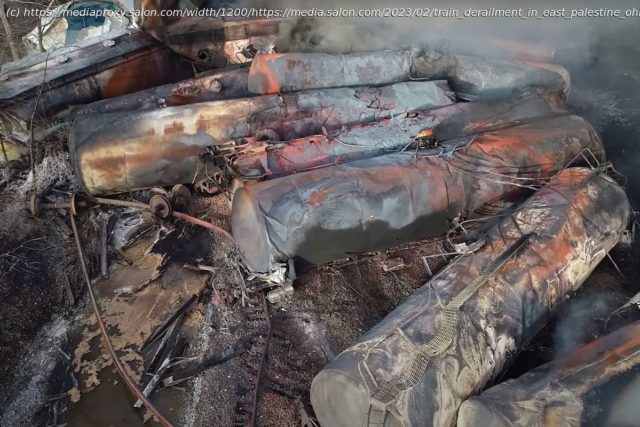Trains carry hazardous chemicals every day. They’re also dangerously unregulated.
When a freight train filled with volatile chemicals derailed in rural Ohio earlier this month, it set off a chain of reactions: the evacuation of a town of nearly 5,000 people; a massive black plume of smoke from a controlled burn; the death of fish in local waterways; and the necessity of monitoring the local air for pollutants.
While the disaster garners headlines, researchers and chemical spill experts told Grist it’s a situation that plays out far too often across the country.
The train that derailed around 9 p.m. on February 3 was carrying chemicals used in a variety of industries, from plastics to agriculture, each with a specific degree of hazard.
The rail industry is responsible for a large share of the movement of highly volatile chemicals and explosives across the country. But for years, it has been plagued by harsh working conditions and a lack of rigorous safety standards and transparency.
Justin Mikulka, a reporter who spent years researching the rail industry’s pitfalls and disasters and wrote the book Bomb Trains: How Industry Greed and Regulatory Failure Put the Public at Risk, said weakened regulations and a rush to reopen is to be expected.
«While the trains are still burning, they’re rebuilding the rails,» Mikulka told Grist. «It’s again an excellent example of how they put profit over public safety.»
Mikulka said, be it chemicals or crude oil, trains are getting longer, going faster, and moving through the majority of the nation’s backyard. These lines are often dubbed «bomb trains» by those in the rail industry and environmental groups.
In the last two decades, train lengths have increased by 25 percent, according to the Government Accountability Office. Currently, the Federal Railroad Administration, or FRA, does not have a limit on how long a train can be. While derailments have decreased in recent years, the severity has increased as the industry focuses on longer trains with small crews.
«The accidents that do occur, because of the longer trains, tend to be bigger accidents — more cars and more potential damage,» Steven Ditmeyer, a former head of the office of research and development at the FRA, told Vox.
Mikulka said that the Ohio derailment could have been worse.
A Northfolk Southern spokesperson told Grist that there were three operators on board the train that derailed, one conductor, one engineer, and a conductor trainee, none of whom were injured. In recent years, rail companies have lobbied for one-person crews to cut costs and rail unions have urged for two-person crews to be mandated at the federal level. Under the Trump administration, the FRA dropped the two-crew proposal, saying at the time «no regulation of train crew staffing is necessary or appropriate for railroad operations to be conducted safely.»
When crews are stretched thin, Mikulka said, accidents and derailments are just waiting to happen. He said calls from workers for increased safety measures have gone unheard. «There are so many different points in this process where we look at how we can make it safer, and the rail company says ‘Yeah, but we don’t want to pay for that.






